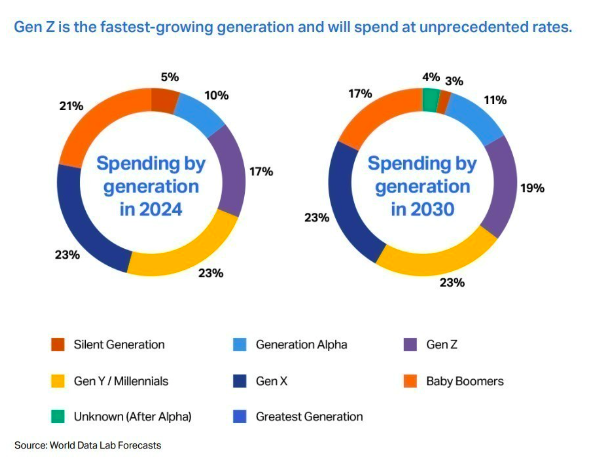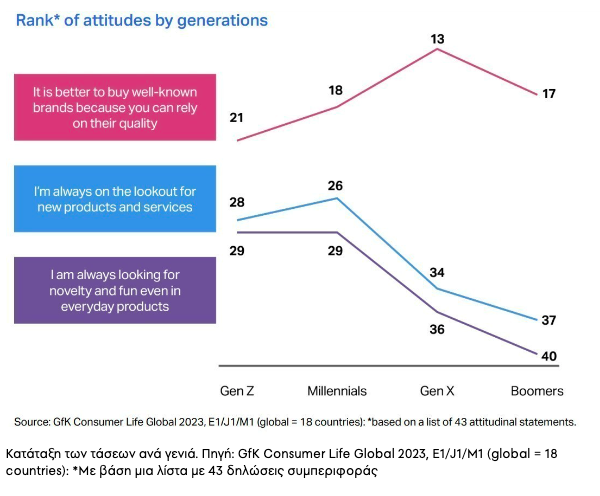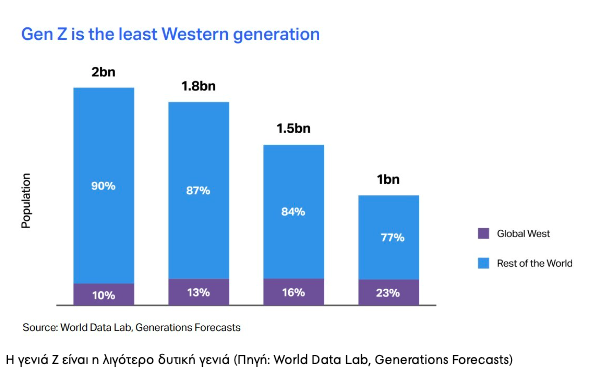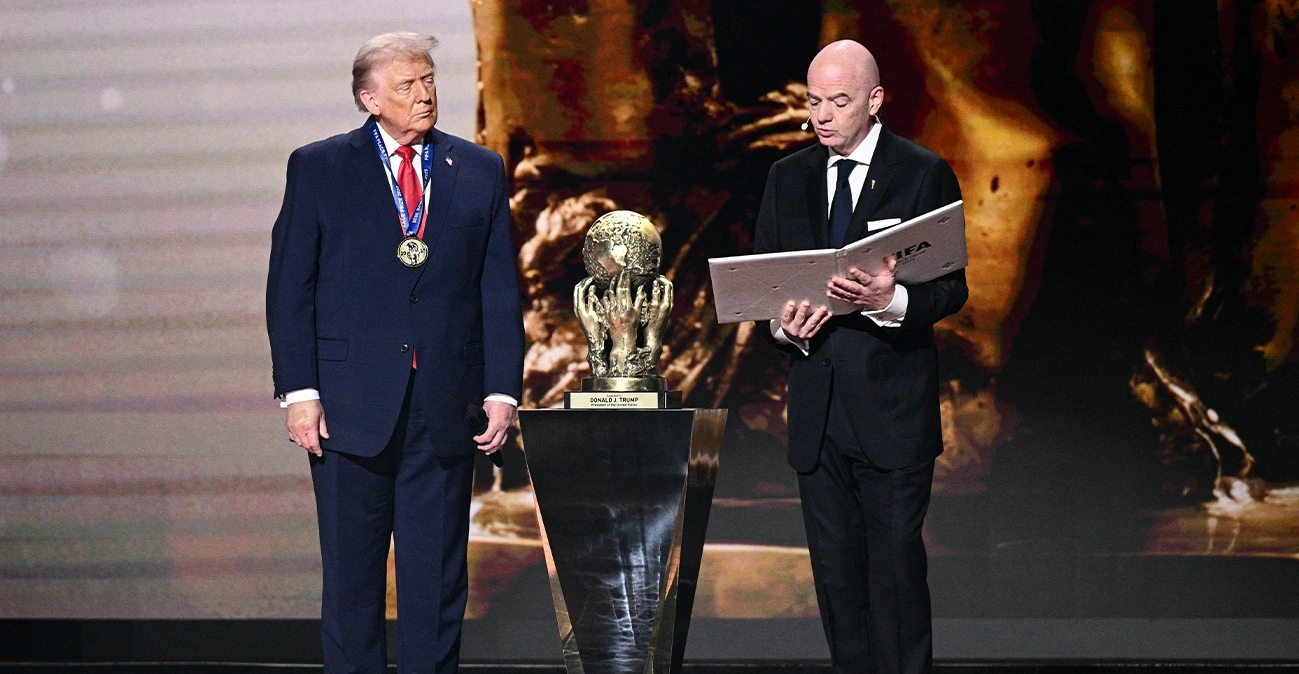“Understanding what sets this generation apart is crucial for tapping into a growth opportunity exceeding $12 trillion,” said Tracey Massey, NIQ’s chief operating officer, at the launch of Spend Z: A Global Report, jointly prepared by NielsenIQ, GfK, and World Data Lab (WDL).

The report provides an in-depth look at Gen Z, individuals born between 1997 and 2012, who represent 25% of the global population (2 billion people). Their global purchasing power is expected to reach $12 trillion by 2030, making them the wealthiest generation ever. By 2034, Gen Z is projected to spend over $9 trillion annually, outpacing all other generations.
“Generation Z is extraordinarily affluent. The average 25-year-old American has an annual income exceeding $40,000. They have more disposable income than Millennials did at the same age and 50% more than Boomers had at 25. Over the next decade, Gen Z’s per capita spending will grow at a compound annual growth rate (CAGR) of 4.02%—twice the rate of previous generations,” the report highlights.

Gen Z is the fastest-growing generation, spending at unprecedented rates
Lonely, less brand-loyal, and environmentally conscious “in words”
Key findings about Gen Z include:
- Demand for Authenticity: For Gen Z, “being truly yourself” is the dominant description of success globally. They are more influenced by relatable influencers than by Hollywood and media celebrities. Experiencing the loneliness caused by technology’s dominance, “a sense of belonging” and self-esteem are top values influencing their product choices.
- Environmental Concerns vs. Actions: While Gen Z expresses concern for the climate and environment (77% won’t buy from countries with poor environmental standards), their consumption of fast fashion and the latest technology contrasts with these statements, revealing a “Say-Do” gap.
- Seeking New and Fun: Gen Z is less brand-loyal and open to experimenting with new and unknown companies, seeking novelty and enjoyment even in everyday products.
- Omnichannel Dominance: Most Gen Zers begin their online shopping journey, emphasizing digital channels’ importance to marketers. Also, 53% have used the “buy” button on social networks. Online reviews from other consumers are their top factor in choosing products. Despite their online influence, Gen Z shops in physical stores more than previous generations, with around 50% of their in-store purchases.
- Health, Beauty, and Wellness: Gen Z’s most dynamic growth areas are in health, beauty, and wellness. 81% of TikTok’s sales are expected to come from health and beauty. Over 50% have used a fitness or exercise app, and 17% have used a fitness band to track health and fitness information.
- Decline of Western Dominance: Only 10% of Gen Z are from North America or Europe, and only 44% of their total spending comes from these regions, marking the first generation with less than half of its spending from Western nations.
“Generation Z is the most connected, largest, and most influential generation to date,” said Marta Cyhan-Bowles, NIQ’s chief communications officer. “Gen Z will have fewer children, be older, possess unprecedented purchasing power, and prioritize health and wellness more than previous generations. Our analysis leaves no doubt: investing in Gen Z today will pay off tomorrow.”

“Gen Z is the biggest, wealthiest, and most global generation ever,” added Wolfgang Fengler, CEO.
Ask me anything
Explore related questions





